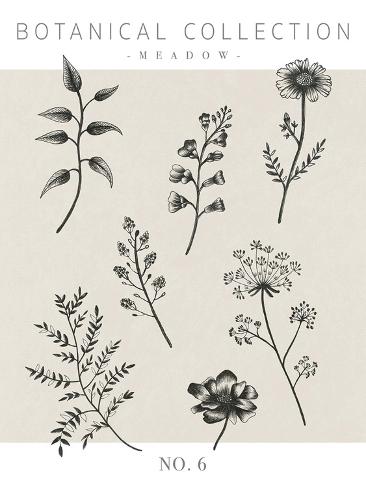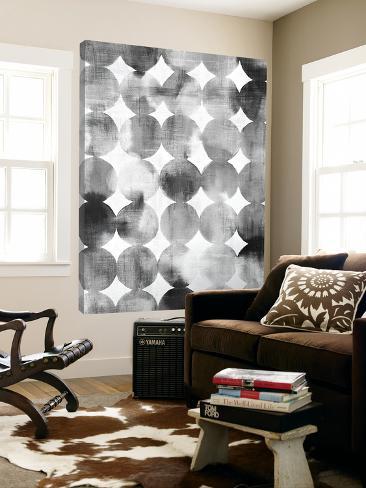This post may contains affiliate links. Read our full disclosure here.
Creating gallery wall ideas that look professionally curated yet personally authentic can feel like an impossible challenge. I remember staring at my blank living room wall for weeks, Pinterest boards saved but still clueless about where to begin. After trial, error, and multiple nail holes (sorry, landlords!), I’ve figured out that professional-looking gallery walls aren’t about expensive art – they’re about thoughtful arrangement. The right gallery wall ideas transform empty spaces into personality-filled focal points without looking like a chaotic collage from college days.

In 2025, gallery walls have evolved significantly from the random assortments we saw trending a few years back. Today’s approach focuses on intentional curation, consistent spacing, and balanced visual weight. Whether you have a treasured art collection or just some favorite prints, these professional gallery wall tips will help you create a display that looks deliberately designed rather than haphazardly hung. Let’s break down how to achieve that polished look while keeping your personal style front and center.
Master the Perfect Gallery Wall Layout Plan First

The biggest mistake I see friends make when creating gallery walls is grabbing a hammer before having a solid plan. Professional gallery wall layouts don’t happen by accident. My gallery wall transformation started on my living room floor, where I could experiment without committing. This floor-first approach saves your walls from unnecessary holes and your sanity from unnecessary frustration.
Start by gathering all your potential pieces and follow these professional steps:
- Create a floor mock-up – Outline your wall dimensions with painter’s tape on the floor, then arrange your frames within this space. Take photos from above to reference later.
- Use paper templates – Trace your frames onto kraft paper, cut them out, and tape them to your wall. This gallery wall spacing guide technique lets you visualize the arrangement and adjust before hammering.
- Maintain consistent spacing – Keep 2-3 inches between frames for a clean, professional look. Inconsistent spacing is what makes gallery walls look amateur and cluttered.
When I finally followed this method for my American-inspired gallery wall, the difference was striking. My boyfriend even asked if I’d hired someone to help! The secret was simply taking time to plan rather than hanging pieces randomly.
Gallery Wall Frame Styles That Create Visual Harmony

Nothing screams “cluttered” faster than a mishmash of competing frame styles. During my apartment days, I learned that cohesive frame selection makes even budget art look expensive. The trick isn’t matching everything perfectly – it’s creating intentional harmony.
For professional-looking gallery wall ideas, follow these frame guidelines:
- Limit frame finishes – Choose 2-3 complementary frame styles maximum (like black frames with brass accents, or natural wood with white).
- Balance visual weight – Mix thin and thick frames carefully. Too many ornate frames create visual chaos, while all thin frames can look flimsy.
- Invest in proper matting – White mats create breathing room around your art and instantly make pieces look more professional, especially in minimalist gallery wall ideas.
When designing a gallery wall without overwhelming the space, remember that unifying your frames creates instant cohesion. Even mismatched art styles can work together when framed with a consistent approach. For my bedroom gallery wall, I used all black frames with white mats despite having completely different art styles – the minimalist approach tied everything together perfectly.
Art Arrangement Strategies for Living Room Gallery Walls

Living rooms often present the biggest canvas for gallery walls, which can be both exciting and intimidating. The larger the wall, the stronger the temptation to fill every inch – resist this urge! Thoughtful art arrangement in living spaces requires restraint and purpose.
Chablis France Established 1938 Black and White Wine Typography Canvas Print
For professional living room gallery wall ideas:
- Position relative to furniture – Anchor your gallery above sofas or consoles, keeping the bottom edge 6-8 inches above furniture for proper proportion.
- Create visual contrast – Mix bold graphic pieces with softer, more subtle art to create visual rhythm. My living room gallery combines black and white photography with watercolor pieces for balanced interest.
- Incorporate dimensional elements – Break up flat frames with mirrors, sconces, or small shelves to add depth to your gallery wall layout ideas.
My favorite trick for professional gallery walls came from an interior designer friend: treat negative space intentionally. The empty wall between pieces isn’t just empty – it’s part of your composition. This thinking transformed how I approach gallery wall spacing, making even simple DIY gallery walls look professionally designed.
Small Space Gallery Wall Ideas That Don’t Overwhelm

Compact apartments and smaller rooms need special consideration when planning gallery walls. In my first apartment, I learned (painfully) that regular gallery wall rules don’t always apply to tight spaces. Small space gallery walls require a lighter touch and more strategic thinking.
For gallery walls in smaller areas:
- Utilize vertical space – When width is limited, build your gallery upward instead of across. This draws the eye up and creates the illusion of higher ceilings.
- Practice restraint – Limit yourself to 3-5 pieces maximum in very small spaces. My tiny hallway gallery has just three carefully chosen pieces, and it looks far more sophisticated than my earlier attempts with eight.
- Try floating shelves – Incorporate slim picture ledges where you can layer smaller frames and mix in small objects for added dimension.
The best gallery wall for small spaces I ever created was in my guest bathroom – just three botanical prints in matching frames arranged vertically. The simplicity worked perfectly for the narrow wall and actually made the tiny room feel more spacious. Sometimes with gallery wall ideas, less truly creates a more custom look.
Creating a Cohesive Look With Curated Wall Decor

The most impressive gallery walls feel deliberately curated rather than randomly assembled. Cohesive gallery walls tell a visual story where each element belongs together. Achieving this doesn’t mean everything must match – it means everything must relate in some intentional way.
For professionally curated gallery wall ideas:
- Unify with color – Choose a limited color palette and ensure every piece incorporates at least one of these colors. My dining room gallery uses only black, white, and gold across different art styles.
- Blend different mediums – Mix photographs, illustrations, paintings, and even textile pieces if they share a common theme, style, or color story.
- Use personal photos strategically – Family photos look more sophisticated when integrated thoughtfully among art pieces rather than dominating the display.

The most successful gallery wall I’ve created started with a single inspiration piece – a vintage map with subtle blue tones. Every additional piece I selected either contained that exact blue shade or complemented it. This approach to choosing a cohesive style made a random collection of thrift store finds look deliberately curated.
Symmetrical vs. Eclectic Gallery Wall Designs

One of the biggest decisions you’ll face with gallery wall ideas is whether to go structured or organic with your layout. Both approaches can look professional, but they create very different vibes in your space. Gallery wall design styles generally fall into two main categories.
Understanding your options:
- Grid arrangements – Perfect for modern interiors and minimalist gallery walls. Using identical frames with consistent spacing creates instant order and sophistication.
- Salon-style layouts – More relaxed and artistic, mixing frame sizes on a wall creates visual interest. The key to keeping this from looking messy is maintaining consistent outer edges and spacing.
For symmetrical gallery walls, precision is everything. Using a level and measuring tape is non-negotiable. For eclectic layouts, establishing some parameters (like a consistent bottom edge) helps maintain visual order despite the variety.

My living room features a symmetrical grid of black and white photography, while my home office showcases a more eclectic arrangement. The difference in feeling is remarkable – one feels calm and ordered, the other energetic and creative. Both look polished because I followed proper gallery wall spacing guidelines for each style.
2025’s Gallery Wall Do’s and Don’ts
After years of trial and error (and way too many nail holes), I’ve learned some timeless rules that still apply to gallery wall ideas in 2025. Professional gallery walls follow certain principles that never go out of style, while avoiding common pitfalls.

What to embrace:
- Center around a focal piece – Start with one standout “hero” piece and build your gallery wall around it
- Use temporary solutions first – Command strips and removable hooks let you experiment before committing
- Embrace odd numbers – Groups of 3, 5, or 7 pieces are naturally more pleasing to the eye than even numbers
What to avoid:
- Too many small pieces – They create visual noise and look cluttered fast
- Uniform height placement – Vary elevations within a logical framework instead of lining everything at eye level
- Poor lighting – Even the most beautiful gallery wall falls flat without proper illumination
The gallery wall in my entryway follows these principles perfectly – it’s built around a vintage mirror (hero piece), uses mostly odd-numbered groupings, and includes picture lights that highlight key pieces. The result feels deliberately designed rather than randomly assembled.
Answers to Your Top Gallery Wall Questions
Which gallery wall layout works best for beginners?
If you're just starting out, a simple grid of identical frames is foolproof. Choose 4, 6, or 9 same-sized frames, maintain equal spacing, and use similar content (all black and white photos, for instance). This approach minimizes variables and guarantees a clean, professional result.
How do I prevent my gallery wall from looking cluttered?
The three most important factors are: limit your color scheme, maintain consistent spacing (2-3 inches between frames), and don't overcrowd the wall. Allow your art to breathe – negative space is part of the design.
What's the best way to hang frames evenly?
For professional-looking gallery walls, I rely on a combination of tools: a laser level, painter's tape to mark positions, and Command picture hanging strips for adjustability. For heavier pieces, use proper wall anchors and a stud finder to ensure security.
Can I create a gallery wall on a budget?
Absolutely! Some of my most successful gallery walls feature thrift store frames (spray painted for consistency), printable free art from online sources, and even framed fabric scraps or gift wrap. The professional look comes from thoughtful arrangement, not expensive components.
Create Your Perfect Gallery Wall in 2025
The most important thing I’ve learned about gallery wall ideas is that they should reflect your personality while following basic design principles. Whether you’re drawn to minimal, structured displays or eclectic, layered arrangements, the fundamentals of balanced composition always apply.
Remember that professional gallery walls are built with intention. Each piece earns its place, whether through color harmony, thematic connection, or visual balance. Take your time, plan thoroughly, and don’t rush the process – a thoughtful gallery wall that builds gradually often looks more authentic than one created in a weekend.
Your walls tell your story, but how you arrange that story makes all the difference between cluttered chaos and designed sophistication. With these gallery wall ideas, you’ll create a display that looks polished and professionally curated while remaining uniquely yours. Now, step back and enjoy your masterpiece – you’ve earned it!





